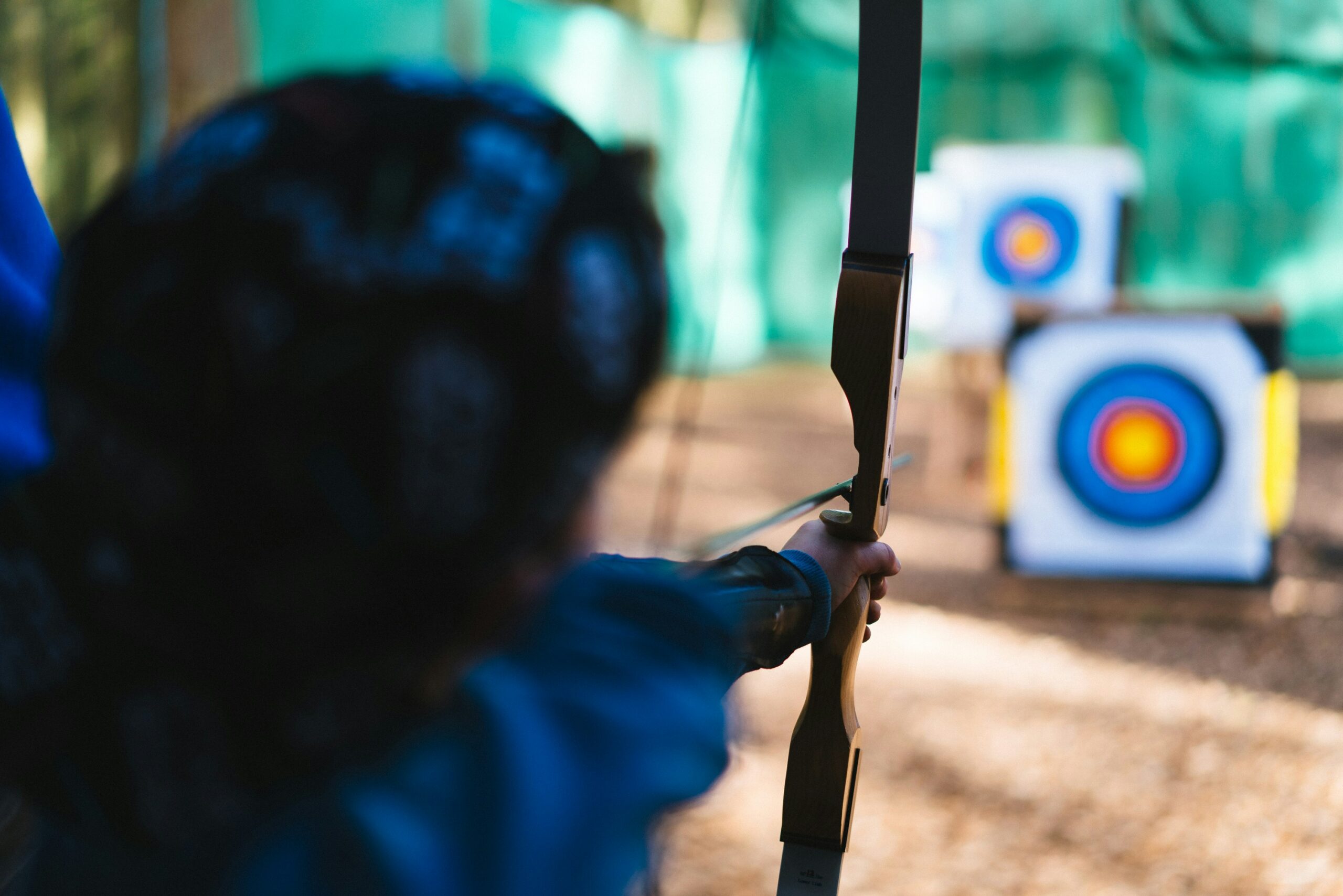Mastering team tactics in archery arrow tag isn’t just about sharp aim—it’s about communication, trust, and fast decision-making under pressure. From forming tight defensive lines to executing aggressive offensive plays, every strategy relies on teamwork. This blog breaks down essential tactics to help your squad sync up, stay sharp, and dominate each round. Whether you’re prepping for a casual match or a competitive showdown, these insights will take your gameplay to the next level.
Key Takeaways
- Team roles, communication, and coordination are the foundation of successful gameplay.
- Coordinated offensive plays help control the pace and overwhelm opponents.
- Strong defensive setups protect key players and create opportunities for counterattacks.
- Practice builds chemistry, sharpens reflexes, and improves tactical execution.
- Leadership and clear communication keep teams focused and adaptable under pressure.
Foundational Archery Arrow Tag Team Tactics

This section defines the core dynamics of an effective archery arrow tag team. In archery arrow tag, every team member plays an integral role in ensuring that movement across the playing field is both cohesive and strategic. Understanding the fundamentals helps teams adapt to unexpected situations during gameplay. Core elements include establishing solid routines, mapping the terrain, and ensuring that each player is clear on their role, whether acting as a shooter, a blocker, or a scout. Effective teamwork builds the high-energy rhythm needed for exciting matches.
Understanding Core Archery Arrow Tag Team Dynamics
The first step is grasping the interplay between individual skills and team synergy. Teams must rely on a mix of accurate shots, split-second decision-making, and solid formation to stay competitive. In archery arrow tag, players track both their teammates and their opponents in real time. This dual awareness develops the kind of reflexes and coordination that make or break a game. With practiced timing and group awareness, teams can move as a single unit even in fast, chaotic moments.
Establishing Clear Communication Protocols for Your Squad
Clear communication is the backbone of any winning team. In archery arrow tag, chaos can make it hard to hear, so squads rely on both verbal callouts and non-verbal cues like hand signals or head nods. These simple systems let players share quick updates without shouting. Whether coordinating an ambush or covering a retreat, everyone needs to understand and use the same communication style. It keeps your team synced and ready to adjust when the game takes a wild turn.
Defining Roles Within Your Archery Arrow Tag Unit
Each player on the team should have a defined job, like a long-range shooter, blocker, scout, or distraction. Assigning roles ensures fewer mix-ups and more focused gameplay. Some players might be great at defense while others shine when leading the charge. When roles are clear, the team moves smoothly, and it’s easier to react to whatever the opponents throw at you. Flexibility is still key—teams should be able to swap roles on the fly when strategies shift mid-round.
Offensive Archery Arrow Tag Team Tactics for Dominance
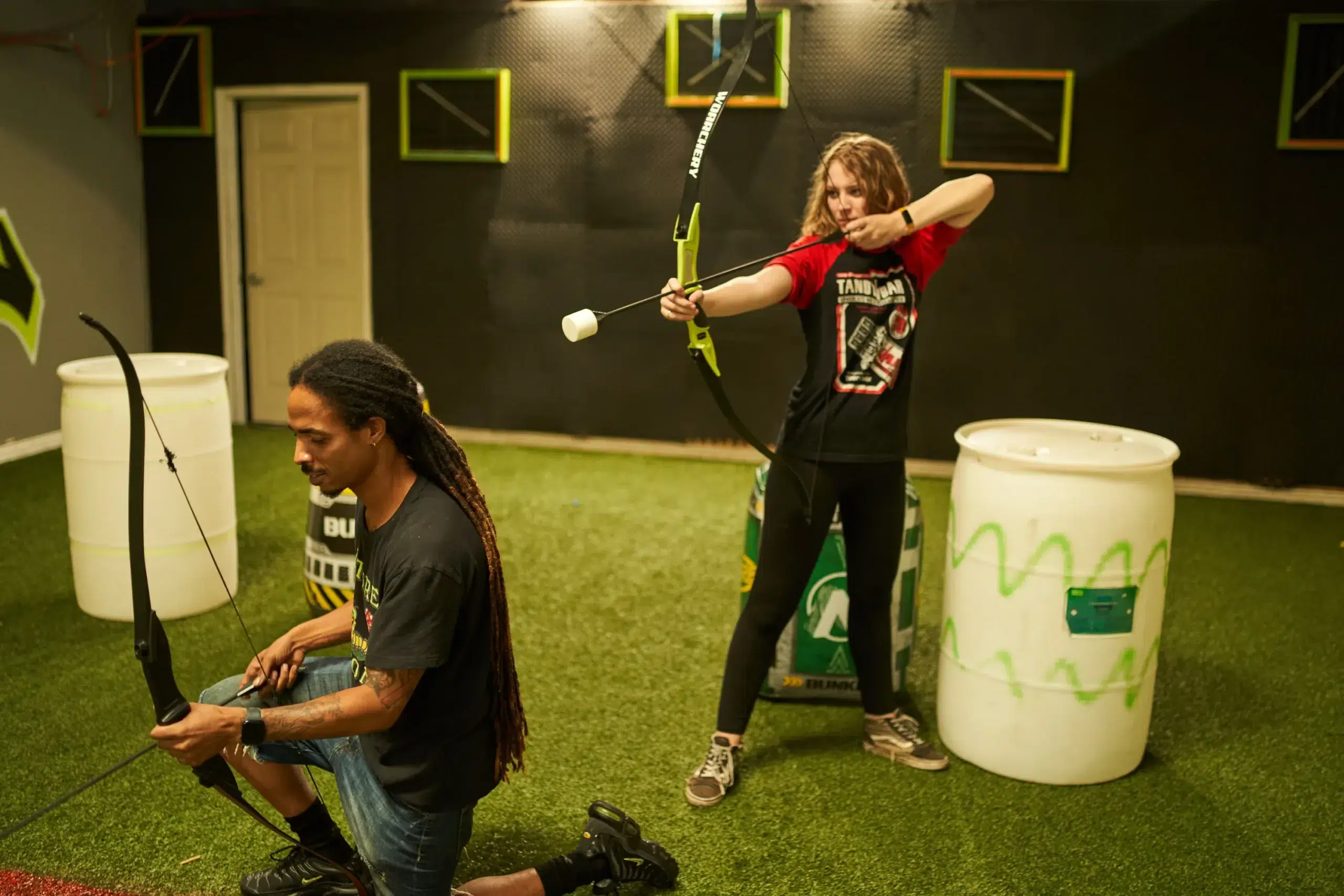
Offensive tactics help teams take control of the match and pressure their opponents. A smart offense disrupts defenses, forces players to scramble, and opens up room to move. Strategic attacks help you claim critical zones and push your opponents back. By keeping the energy high and the pressure constant, your team gains the momentum needed to dominate. With good planning, quick movement, and solid teamwork, offensive tactics can completely turn the tide of play.
Executing Coordinated Attacks in Arrow Tag
Coordinated attacks are all about timing and teamwork. The goal is to hit your opponents from multiple angles at once, forcing them to split focus and retreat. One part of your team might draw fire while another moves in from the side. These layered plays break apart defensive setups and give your team the upper hand. Practice is key—your crew needs to be comfortable with the plan and able to adjust in real time without hesitation.
Effective Flanking Maneuvers for Your Team
Flanking works best when the other team doesn’t see it coming. While one squad holds the front line, a second group can sneak around the side to hit from a fresh angle. This creates gaps in defense and gives your shooters clean shots. Timing is everything—if the flank is too early or too late, the advantage is lost. Successful flanking comes down to reading the battlefield, using cover, and moving quickly once the window opens.
Suppressive Fire Techniques in Archery Arrow Tag
Suppressive fire isn’t just about hitting a target—it’s about limiting where the other team can move. A steady stream of foam arrows can pin down opponents and make them hesitate, opening the door for your teammates to rush in. This kind of pressure breaks the other team’s rhythm and lets you control the pace. It’s especially useful during objective-based games when your squad needs a moment to secure a zone or grab a flag.
Defensive Archery Arrow Tag Team Tactics for Resilience
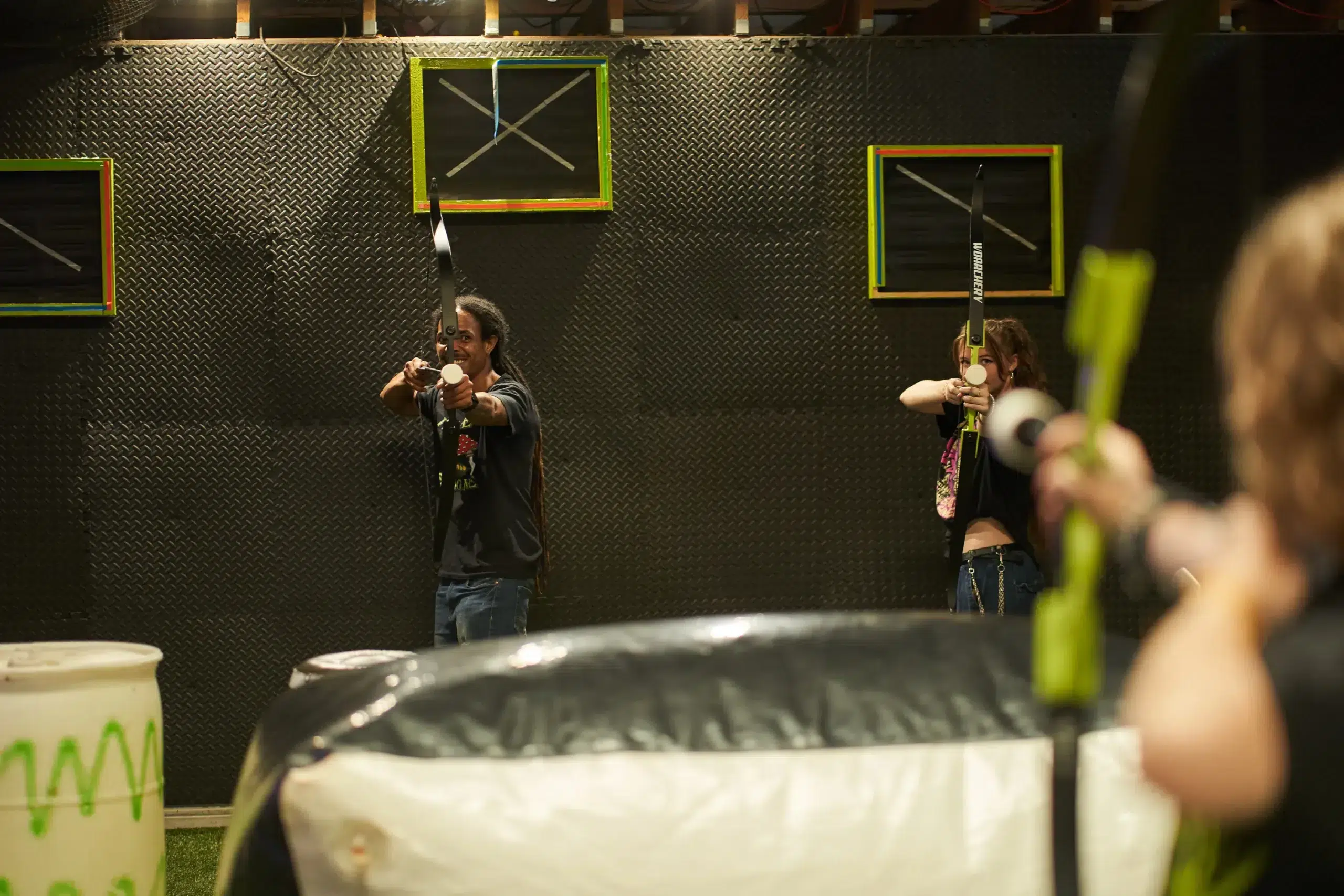
Defense is about more than hiding—it’s about control. A strong defensive team blocks advances, protects key players, and buys time to regroup. Defensive strategies help slow down aggressive opponents and hold vital positions under pressure. With smart positioning and good communication, your team can frustrate enemy attacks and force mistakes. When done right, defense doesn’t just survive—it creates opportunities to strike back stronger.
Setting Up Strong Defensive Lines in Arrow Tag
A good defensive line uses both space and teamwork. Staggering your players creates overlapping angles and ensures that no one area is left wide open. This wall of defense can slow down even the most aggressive push. Whether you’re guarding a key zone or waiting to launch a counter-attack, the formation gives you control over the field. Regular drills help your team build muscle memory so the line forms quickly and holds strong.
Utilizing Cover and Concealment as a Team
Using cover the right way gives your team time to breathe and regroup. Barriers, walls, props—anything that blocks foam arrows or vision—becomes an asset. Players should always know where the nearest safe spot is and how to use it while staying alert. Concealment also adds a surprise factor for launching sneaky counterattacks. On well-designed fields, teams that know how to use the terrain often control the pace of the game.
Protecting Key Players and Objectives in Archery Arrow Tag
Some players lead your offense or call the shots—protecting them is vital. Build your defense around these key roles by assigning support players who cover their movements. At the same time, your team needs to defend game objectives like a central zone or a flag. Keep these areas locked down with layered protection, overlapping fields of fire, and quick response units. Securing these elements often makes the difference between a win or a loss.
Counter-Attack Strategies for Your Arrow Tag Team
Defense can flip into offense in an instant with a solid counter-attack. When the other team gets too aggressive and overextends, that’s your cue. Collapse your formation to tighten the defense, then pick a weak spot and hit back hard. Quick transitions like this can catch the other side off guard and reset the balance of power. Practicing these moves helps teams stay ready and turn defense into a launchpad for winning plays.
Refining Your Archery Arrow Tag Team Tactics Through Practice
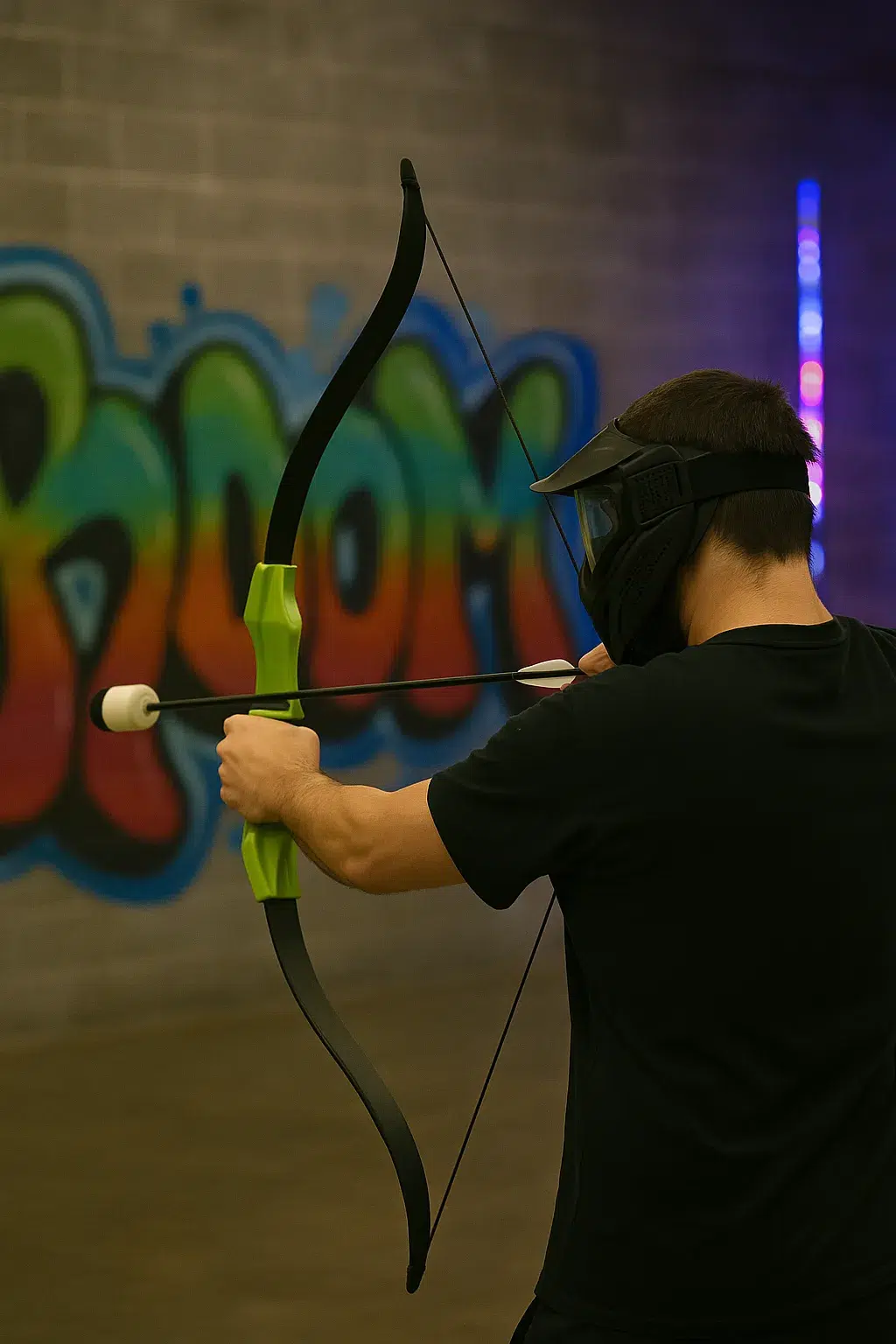
Regular practice sharpens both individual and team performance in archery arrow tag. Teams that train together become more coordinated, faster on the draw, and better at handling pressure. Practice helps players master their roles and respond instinctively to shifting game conditions. Through repetition and refinement, teams can develop seamless strategies, sharpen reaction times, and build the trust needed for elite performance. Training isn’t just about drills—it’s about building confidence and chemistry.
Designing Effective Arrow Tag Team Drills
Great drills focus on simulating real match intensity. These include fast-paced shooting under pressure, communication-based obstacle courses, and partner coordination exercises. Target-focused challenges improve aim and timing, while team formations help refine group movement and defensive alignment. The best drills push players outside their comfort zone but also reinforce teamwork. When practiced consistently, these exercises create strong muscle memory that teams rely on during intense gameplay.
Analyzing Gameplay Footage to Improve Team Tactics
Recording and reviewing games is a smart way to uncover weak spots and find areas for improvement. Teams can pause footage to review movement patterns, missed shots, or communication breakdowns. Watching these moments together helps the squad reflect on strategy and brainstorm adjustments. The goal isn’t to criticize but to evolve. Teams that routinely analyze their play often perform more consistently because they learn from their own experience, not just the outcome of a match.
Simulating Game Scenarios for Tactical Rehearsal
Simulated scenarios replicate high-pressure moments without the risk of losing a match. Teams can rehearse surprise attacks, quick defenses, or timed flag captures to see how they react under stress. These practice rounds encourage creative solutions and give everyone a chance to rotate roles and build adaptability. Running these drills regularly boosts confidence, improves decision-making, and prepares the team for anything they’ll face in a real match.
Building Team Chemistry for Seamless Tactical Execution
Team chemistry doesn’t just happen—it’s built through regular, intentional connection. Whether it’s practicing together, sharing post-game meals, or engaging in friendly warmups, these moments build trust. When players know each other’s style and rhythm, communication becomes faster and smoother. In archery arrow tag, this can mean the difference between hesitation and winning action. A close-knit team moves as one, covers each other’s blind spots, and reacts instinctively in high-stakes moments.
Communication and Leadership in Archery Arrow Tag Team Tactics
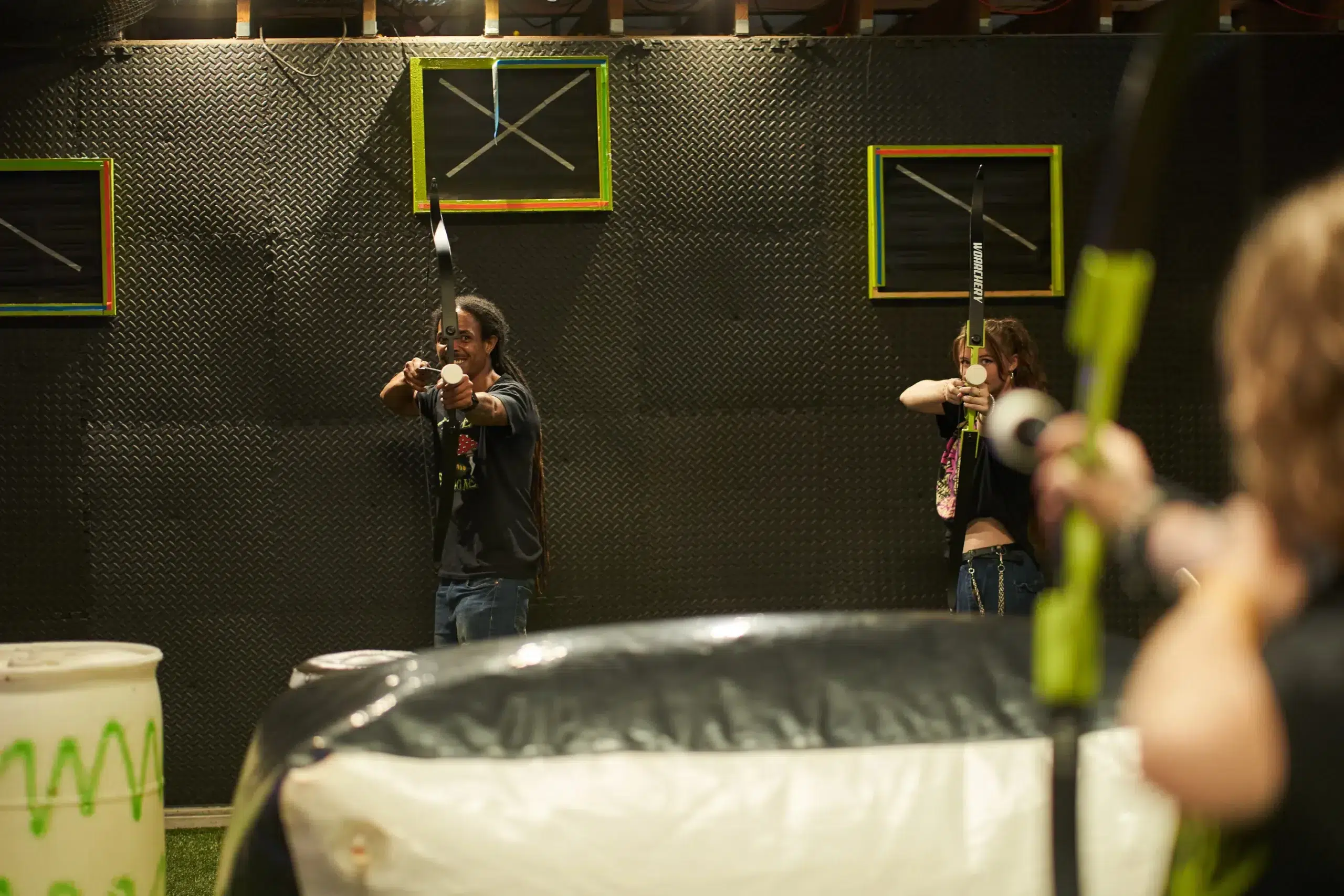
Fast-paced archery arrow tag matches demand clear leadership and effective communication. From the opening move to the final push, teams rely on leaders to make quick calls and players to share critical info fast. Strong communication ensures that every player knows their role and stays aligned with shifting strategies. Good leaders don’t just give orders—they inspire and adapt. When leadership and communication are solid, teams stay locked in and dominate together.
Developing a Non-Verbal Communication System for Arrow Tag
Verbal cues don’t always work in loud, high-energy games, which makes non-verbal signals essential. Teams should use a simple system of hand gestures, eye contact, or motion cues to direct teammates without shouting. These silent signals are especially effective for stealthy plays or when coordinating multi-angle attacks. Practicing them in drills ensures everyone knows what they mean and when to use them. Non-verbal communication keeps the team in sync even when the chaos ramps up.
The Role of a Team Captain in Directing Tactics
A strong team captain is like the coach on the field—reading the action and calling the shots in real time. This person keeps the squad organized, relays quick changes in strategy, and leads by example. They’re the voice of calm when pressure mounts and the motivator who keeps the team pushing. Having a dedicated captain ensures that everyone’s on the same page, and during tense moments, they help maintain focus and coordination.
Making Quick Tactical Decisions Under Pressure
In archery arrow tag, split-second choices can make or break a round. Teams that train for rapid decisions build the confidence to act fast and stay calm under pressure. Quick tactics include calling a shift in formation, executing a retreat, or launching an unexpected flank. This readiness comes from practicing real-time scenarios and trusting your instincts. The more your team prepares for pressure situations, the better they’ll perform when it counts.
Frequently Asked Questions
How does effective communication improve archery arrow tag performance?
Effective communication ensures that all team members are aligned with tactical objectives, thereby reducing confusion during fast-paced gameplay. Non-verbal cues and succinct verbal commands allow teams to coordinate movements and decisions quickly, resulting in improved accuracy and team cohesion.
What are the benefits of practicing basic formations in archery arrow tag?
Practicing basic formations enhances the team’s ability to maintain structure under pressure, facilitates quick repositioning, and builds cohesive strategies. Consistent practice leads to instinctive responses during gameplay and enables effective defense and coordinated offensive maneuvers.
What role does leadership play in team-based archery arrow tag?
Leadership is vital for directing tactical strategies, making quick decisions under pressure, and maintaining team morale. A strong leader ensures that everyone knows their role, coordinates communication, and adapts tactics dynamically to respond to the enemy’s actions.
How can advanced maneuvers like bait and switch be implemented effectively?
Advanced maneuvers such as bait and switch require thorough practice, precise timing, and clear communication. By deliberately exposing one part of the defense to lure the enemy and then rapidly counter-attacking, teams can disrupt the opponent’s strategy and seize the initiative in the game.
Why are post-game debriefs important in refining tactics?
Post-game debriefs are essential because they provide an opportunity for teams to analyze performance, identify mistakes, and learn from tactical experiences. This reflective process helps improve future game strategies and strengthens overall team performance.
Conclusion
Archery arrow tag is a fast-moving team sport where victory depends on more than individual skills. When your team trains together, communicates clearly, and moves with purpose, every match becomes more strategic and satisfying. Use these tactics to create a more connected squad, tighten up your plays, and keep your opponents guessing. With the right team strategy in place, you’ll stay ahead of the game—every round, every time.

